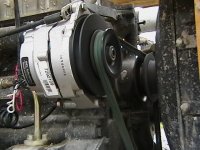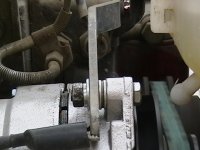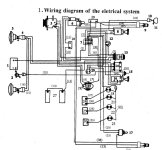Bob Rooks
Elite Member
- Joined
- Feb 27, 2007
- Messages
- 3,854
- Tractor
- Dozer (sold), Yanmar SV40 excavator, Skid steer (sold), Laser Dozer, Rotary trail cutter, 13 HP debris blower, 6X4 Gator. Giant G2700HD+ wheel loader.
The OEM alternators are only ~14 amp. Won't even keep up with your headlights. Ask me how I know this.. The Delco 10 Si or 12 Si are direct shoe-in replacements - even use the same pulley. The only real mod you will have to do is get a different length fan belt and insert a couple of spacer washers for the adjusting arm. I went with the segmented belt from Harbor Freight - I will never have to replace it again.
I went with the 12Si 72 amp alternator because I use electric winches, powerful lights, and a 110v inverter.
Actually, what RonMar said is true If all you need the battery for is starting the engine. Just use the alternator to keep the belt tight.
I went with the 12Si 72 amp alternator because I use electric winches, powerful lights, and a 110v inverter.
Actually, what RonMar said is true If all you need the battery for is starting the engine. Just use the alternator to keep the belt tight.


